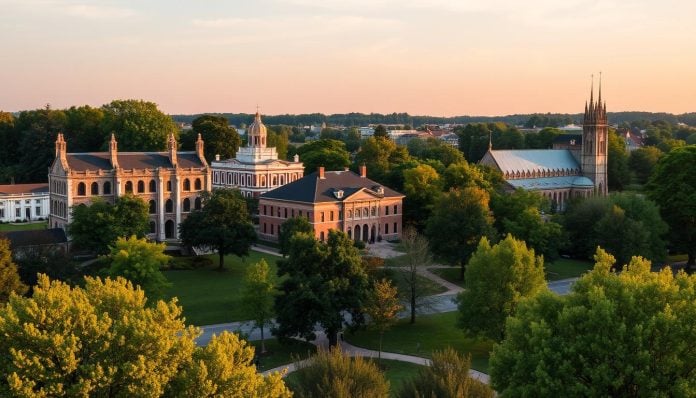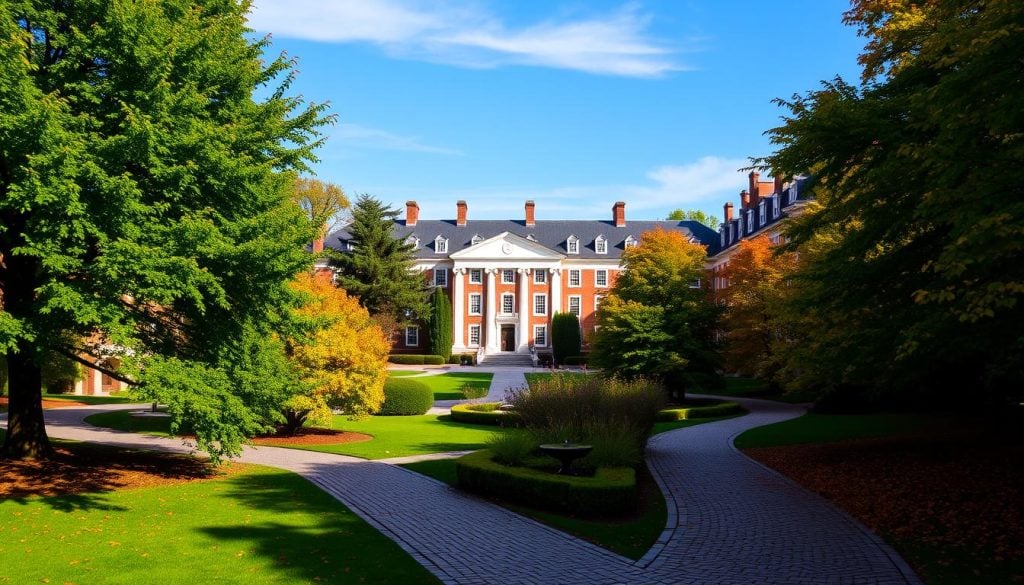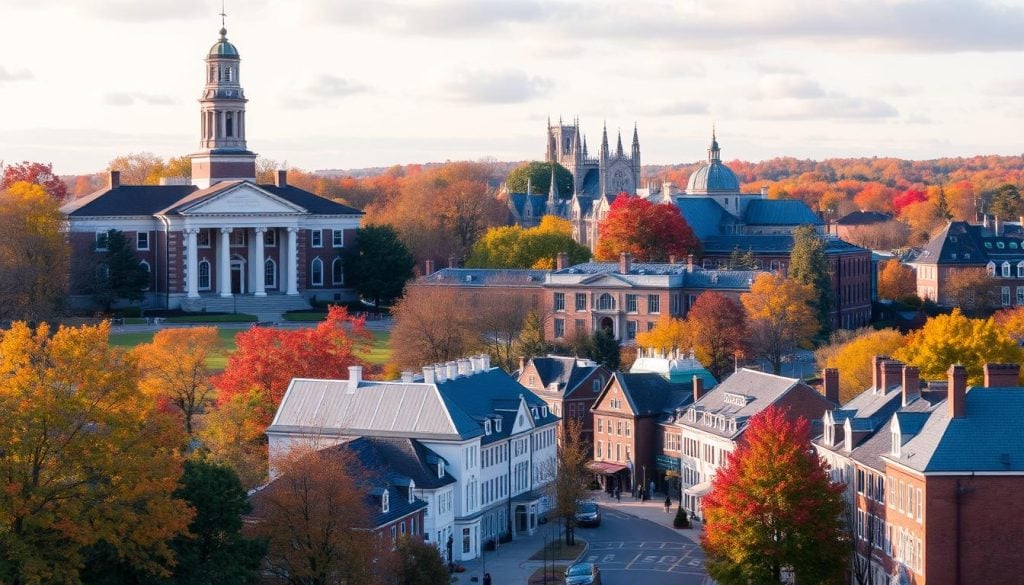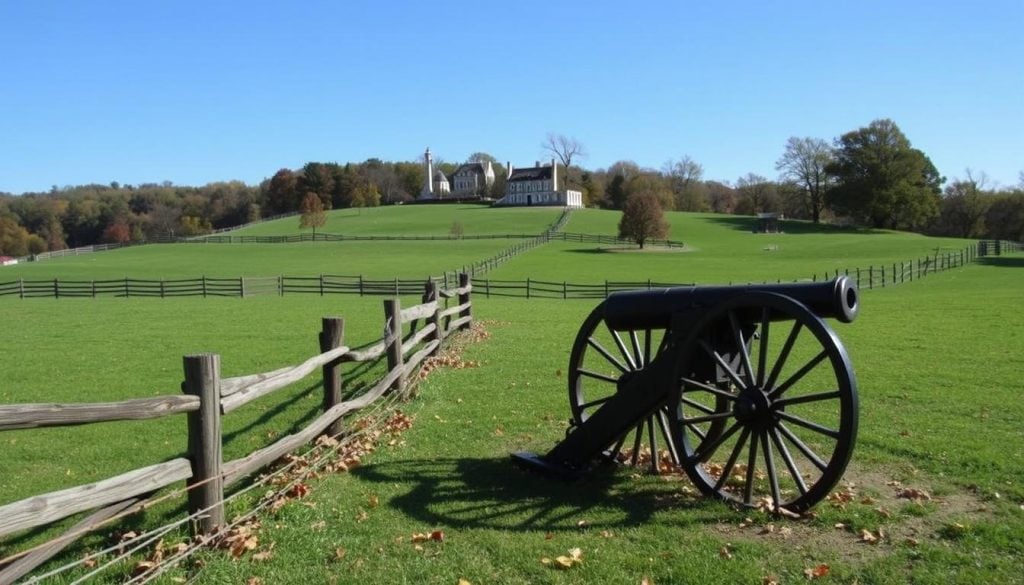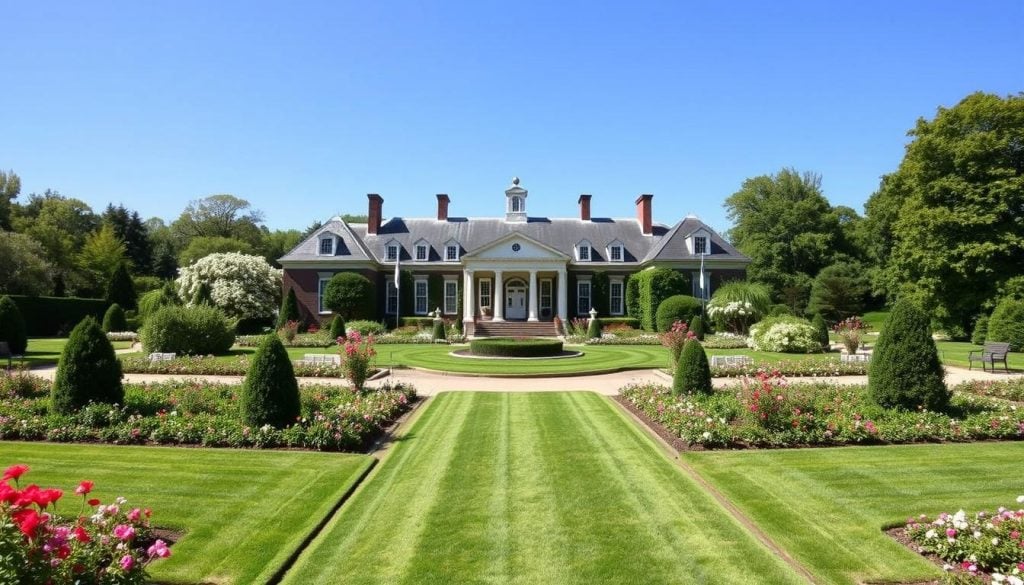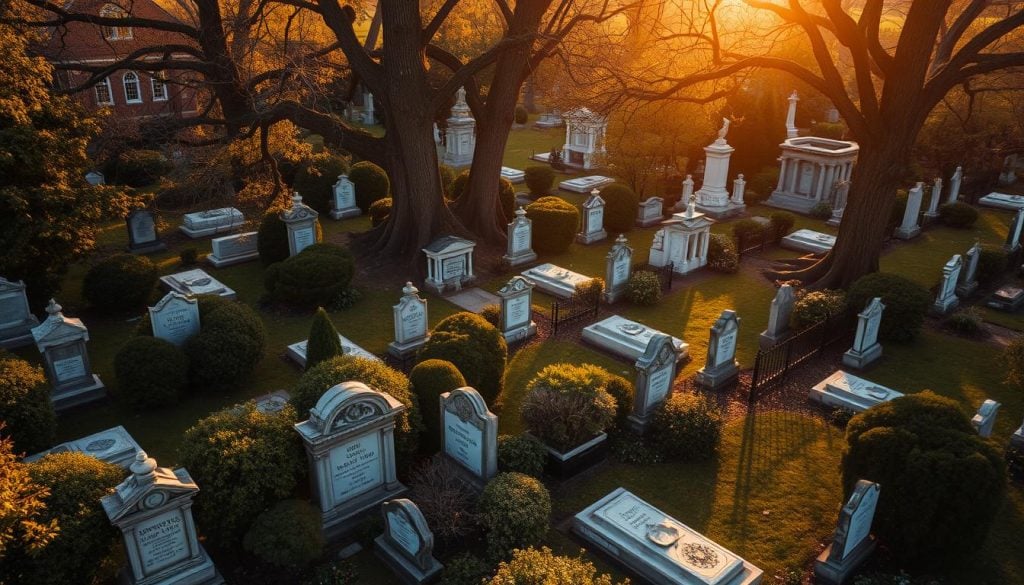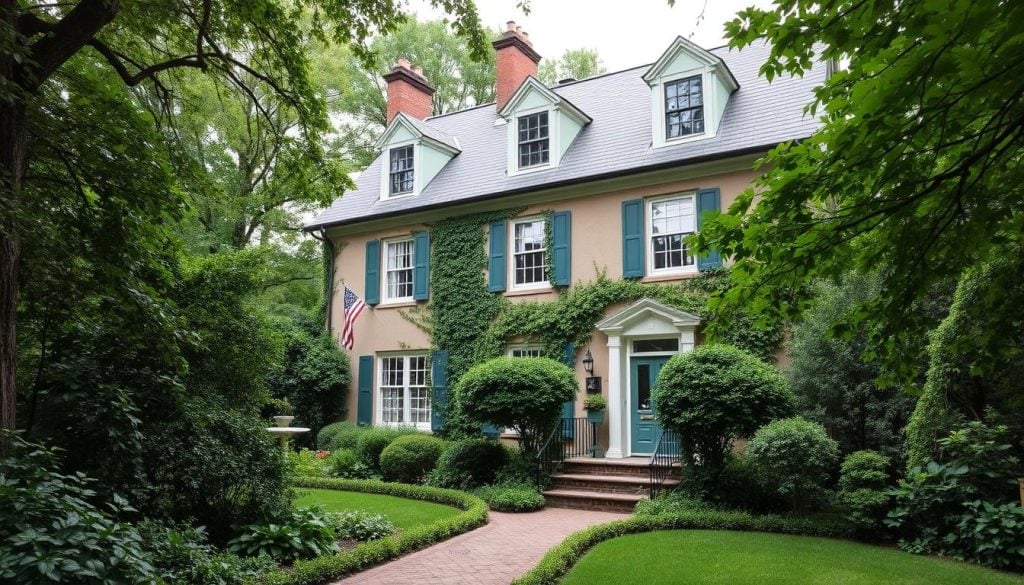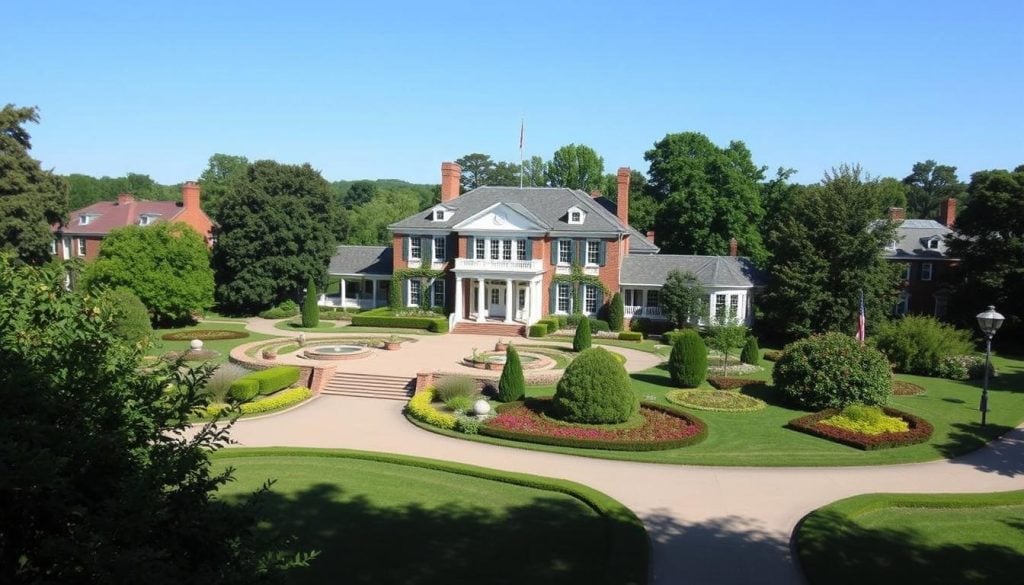Ever wondered about the key moments in American history in Princeton’s charming streets? This town is full of culture and history, inviting you to explore its stories. You’ll find many historical sites in Princeton that show us the past, including landmarks and attractions that have lasted for centuries.
Princeton has seen everything from early Quaker settlements in the late 17th century to important events in the American Revolution. This guide will answer the question: What historical sites can I visit in Princeton? Let’s dive into these historic places and learn about the rich experiences they offer. Your visit will be both memorable and enlightening.
Introduction to Princeton’s Rich History
Princeton is a key part of American history, telling a story of the nation’s spirit. It was founded in the late 1600s and became a meeting place for famous Presidents and Founding Fathers. The town played a big role in the Revolutionary War, especially in the Battle of Princeton in 1777.
It even served as the nation’s capital in 1783 when the Continental Congress met at the College of New Jersey, now Princeton University. These events show how important Princeton was in shaping America.
Today, Princeton celebrates its history with many attractions. The town is filled with landmarks and institutions that tell its story. By taking Princeton historic tours, visitors can dive into the key moments that shaped the community.
The Princeton historical society is key in keeping this history alive. They make sure the stories and memories of the past stay with us for future generations.
What historical sites can I visit in Princeton?
Princeton is full of historical sites that show its deep history. Each site lets you see important moments in American history. It’s perfect for those who love heritage and culture. By visiting these sites, you’ll learn more about Princeton’s importance and its part in the country’s story.
Discovering the Historical Significance
Princeton played a big role in the American Revolutionary War and has a long history of learning. As you walk around, you’ll see stories in the buildings and landscapes from the old days to now. Every visit lets you connect with the past and appreciate Princeton’s lasting impact.
Overview of Notable Historical Landmarks
Make sure to see these amazing historical spots in Princeton:
- Princeton University Chapel: This beautiful building shows off Gothic architecture and the university’s rich history of learning.
- Nassau Hall: This famous building tells the story of the university’s past. It has been many things, from classrooms to a military base during the Revolutionary War.
- Princeton Battlefield State Park: This park is where the Battle of Princeton happened. It’s a place to think about the bravery and sacrifices of those fighting for freedom.
Princeton University Chapel
The Princeton University Chapel is a key example of historic buildings in Princeton. It shows a deep love for beauty and spirituality. Built in 1920 after a fire, the chapel has a stunning Gothic design. It amazes everyone who sees it.
Architectural Highlights
The chapel’s stained glass windows are a sight to behold. They show off the skill of artists. The tall spires and carvings make it a favorite spot for photos. It’s not just for events; it’s a symbol of the university’s values and faith.
Access and Visiting Information
Visitors can see the chapel’s outside anytime. But, you should watch for events that let you inside. These events are a chance to see the chapel’s stunning inside. It’s a top spot to visit in Princeton.
Princeton Battlefield State Park
Princeton Battlefield State Park is a key spot that reminds us of the American Revolutionary War’s big moments. It’s one of the top historical spots in Princeton, marking the 1777 Battle of Princeton. Led by George Washington, this battle was against British forces. Here, you can dive into history and feel the spirit of a time that boosted American morale and support for freedom.
Significance of the Battle of Princeton
The Battle of Princeton was more than just a fight. It was a turning point in the Revolutionary War. After some tough losses, Washington’s win brought back hope to the Continental Army and the people. This victory is celebrated in many Princeton museums, showing its big role in U.S. history.
Visiting Highlights within the Park
At Princeton Battlefield State Park, you’ll find:
- Walking trails that take you through the battlefield, letting you think about the historical events in peace.
- Historical markers that tell you all about the battle and why it matters.
- The preserved Thomas Clarke House, which was a hospital for wounded soldiers back then.
Every part of the park helps you grasp the importance of this key fight for independence. It’s a place that teaches both locals and visitors about this chapter in history.
| Feature | Description |
|---|---|
| Walking Trails | Scenic paths that weave through the historic battlefield. |
| Historical Markers | Informative displays that narrate the events of the battle. |
| Thomas Clarke House | A historical building preserved as a symbol of the battle’s aftermath. |
Check out this important park and see one of the many historical spots in Princeton. They give us a peek into America’s fight for independence.
Nassau Hall: A National Historic Landmark
Nassau Hall is a key Princeton historical landmark. It shows the deep history of Princeton University and American education. Built in 1756, it was the biggest academic building in the colonies. It has seen many challenges, like wars and fires.
This building is very important in American history. It was even a temporary home for the Continental Congress. Famous people who helped shape the nation worked here. The Princeton historical society works hard to keep its story alive.
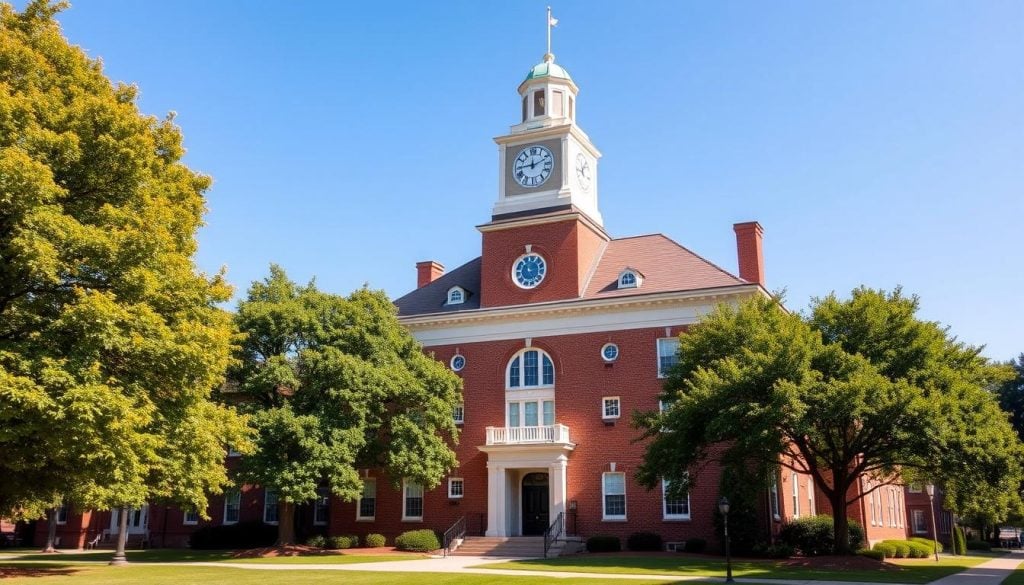
Now, Nassau Hall is where important offices are located. It’s still a key part of the university. Its lasting presence shows the strength of the institution. Visiting this landmark lets you touch history that has shaped our country.
| Feature | Details |
|---|---|
| Year Built | 1756 |
| Architectural Style | Georgian |
| Significant Events | Temporary Seat of the Continental Congress |
| Current Use | Administrative Offices |
| Association with | Princeton Historical Society |
Morven Museum & Garden
At 55 Stockton Street, the Morven Museum & Garden opens a window to Princeton’s history. It shows us a home of Richard Stockton, a key signer of the Declaration of Independence. Visitors can enjoy the beautiful gardens and see rooms that show off classic architecture and history.
Exploring the Home of a Declaration Signer
The Morven Museum is a key spot for those who love American history. Walking through, you’ll see details that tell stories of important people who helped shape America. Learning about Richard Stockton gives a special look at early American politics and culture.
Current Exhibitions and Events
Morven Museum & Garden has many exhibitions and events, celebrating New Jersey’s art, heritage, and diversity. Every visit lets you meet local artists and see historical artifacts. It’s a key place for those wanting to learn more about Princeton’s history. Museum programs offer a fun way to explore Princeton’s legacy.
Bainbridge House: A Glimpse into the 18th Century
When you visit Princeton’s historical spots, don’t miss Bainbridge House. This 18th-century gem is a prime example of Georgian architecture. Built in 1766, it’s a standout among Princeton’s historic homes, with original details that take you back in time.
This house was once the Historical Society of Princeton’s headquarters. It tells the story of Commodore William Bainbridge, a key naval figure. His life and role in the Revolutionary War highlight the complex themes of freedom and loyalty in America’s past.
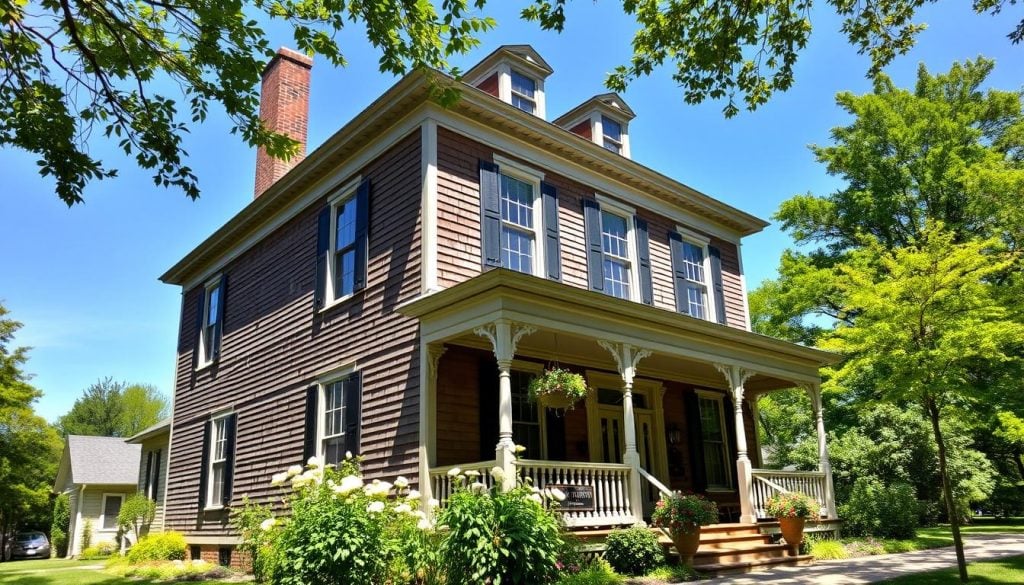
- Tour Options: Regular tours offer deep insights into the house’s history and importance.
- Architectural Highlights: See the original design elements that showcase the Georgian style.
- Educational Resources: The house is a hub for learning about Princeton’s history.
Visiting Bainbridge House is like taking a journey back in time. You’ll learn about Princeton’s role in American history. It’s a chance to see a rare 18th-century structure and hear the stories that made this place iconic.
| Feature | Description |
|---|---|
| Year Established | 1766 |
| Architectural Style | Georgian |
| Significant Previous Owners | Commodore William Bainbridge |
| Current Use | Headquarters of the Historical Society of Princeton |
Princeton Cemetery: Final Resting Place of Notable Figures
The Princeton Cemetery is a key spot in the town’s heart. It’s where many famous people rest. You’ll find graves of important figures from American history, like politicians, military leaders, and scholars. Walking through, you learn about their big impacts and legacies.
Distinguished Burials
Here lies former U.S. President Grover Cleveland and scholar John Witherspoon, who signed the Declaration of Independence. These spots are a big draw for history buffs and tourists. The cemetery’s peaceful vibe lets you think deeply about the lives that changed the nation.
Historical Monuments
Look for grand monuments in the cemetery, honoring big names. At the main entrance, you can get brochures that point out key graves. Each monument tells you about the person’s life and their big role in Princeton and the wider world. It’s a must-see for anyone into Princeton’s history.
| Name | Profession | Significance |
|---|---|---|
| Grover Cleveland | U.S. President | Only president to serve two non-consecutive terms |
| John Witherspoon | Vice President of the Continental Congress | Signatory of the Declaration of Independence |
| James Madison | U.S. President | Fourth president of the United States |
| Joseph Henry | Physicist | Known for contributions to electromagnetism |
Scott Fitzgerald’s House: Literary History
F. Scott Fitzgerald, famous for “The Great Gatsby,” lived in Princeton for a while. This time in Princeton deeply influenced his writing. His old home at 599 Summit Avenue is now a key spot for book lovers. It shows where his stories came to life.
This house links Fitzgerald to Princeton, where he briefly studied before leaving. It stands as a symbol of his life and his works’ themes of social class. By visiting, you get to see how his surroundings shaped his stories.
Exploring Princeton historic tours or diving into local literary history? Don’t miss Scott Fitzgerald’s House. It’s a place where the famous author’s legacy lives on. It’s a key spot for anyone interested in literature.
Drumthwacket: Official Governor’s Residence
Drumthwacket, built in 1835, is the official home for New Jersey’s Governor. It’s a beautiful example of Georgian architecture, standing out among Princeton’s landmarks. The house and its gardens are perfect for exploring and relaxing.
This place is not just about looks; it’s also full of history. In 1966, the state made it the governor’s mansion. Now, visitors can see artifacts that tell the story of New Jersey’s politics.
- Experience guided tours that reveal the residence’s role in state affairs.
- Explore the gardens that showcase diverse plant life and provide a peaceful retreat.
- Learn about the architectural style and its significance in the context of other Princeton historic places.
Don’t miss Drumthwacket when you’re in Princeton. It’s a key spot for learning about the state’s history and its role in governance.
Princeton Historical Society: Preserving Local History
The Princeton historical society is key to protecting the town’s rich past. It works hard to collect and keep items that matter to Princeton’s history. These items tell stories that shape who we are today.
People can dive into Princeton’s history through fun activities. The society offers tours, programs, and exhibits that bring important events and people to life. These make learning about Princeton’s past easy for everyone.
Being part of local events helps people feel closer to their history. The society invites everyone to join in, building a strong sense of community. By doing this, the society keeps Princeton’s history alive and valued.
Princeton Historical Walking Tours
Walking tours in Princeton are a great way to learn about the town’s history. You can explore everything from the Revolutionary War to famous authors. With expert guides, you’ll get a deeper understanding of Princeton’s rich heritage.
Tour Options and Itineraries
There are many types of walking tours in Princeton. You can pick from:
- Standard Guided Tours: These tours cover key historical spots and share interesting stories.
- Themed Tours: These focus on specific topics like architecture, famous people, or literary works.
- Private Tours: These tours are customized for you, based on what you’re interested in.
Benefits of Guided Historical Tours
There are many benefits to taking a guided tour in Princeton:
- Expert Knowledge: Guides share stories and facts that make history come alive.
- Interactive Experience: You can talk with other history lovers and ask questions.
- Convenience: You get to see the city’s main sights with a planned tour.
Conclusion
Princeton is a gem of American history, filled with sites that tell the nation’s story. From the grand Princeton University Chapel to the peaceful Princeton Battlefield State Park, each spot has its own tale. These places let you dive deep into history and appreciate America’s cultural roots.
Walking through Princeton, you’ll feel the touch of history at every turn. From the quiet Princeton Cemetery to the stunning Nassau Hall, each place tells a story. These sites make you think about key moments and the people who shaped America. They show why history is still important today.
Your visit to Princeton’s historical sites will be both eye-opening and uplifting. You’ll connect with the past and help keep America’s story alive. Let Princeton’s history inspire you, making your visits unforgettable and full of meaning.

































